By Stacey Flores Chandler, Reference Archivist
On the morning of August 28, 1963, roughly 250,000 people arrived in Washington D.C. to join the March on Washington for Jobs and Freedom, a massive demonstration in support of civil rights for Black Americans. As the largest protest of its time and the stage for Martin Luther King, Jr.’s “I Have A Dream” speech, the March on Washington is remembered now as a landmark moment in American history. But records in the JFK Library’s archives show that in 1963, its organizers faced behind-the-scenes challenges that made pulling off a successful March even more complicated than it seemed.
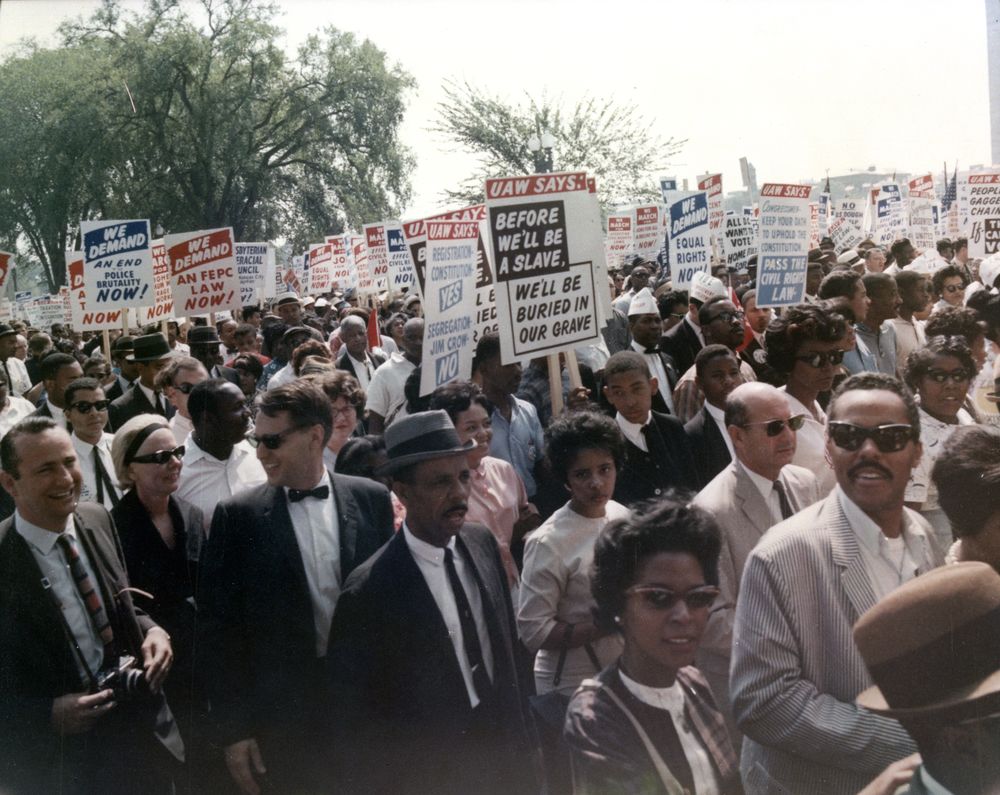
THE leadership
The March was planned by some of the country’s biggest civil rights organizations, represented by leaders known as the Civil Rights Movement’s “Big Six”: James Farmer (Congress of Racial Equality); John Lewis (Student Nonviolent Coordinating Committee); Martin Luther King, Jr. (Southern Christian Leadership Conference); A. Philip Randolph (Negro American Labor Council); Roy Wilkins (NAACP); and Whitney Young (National Urban League). Most members of the planning team, which also included white leaders from religious organizations and labor unions, spoke during the official program.
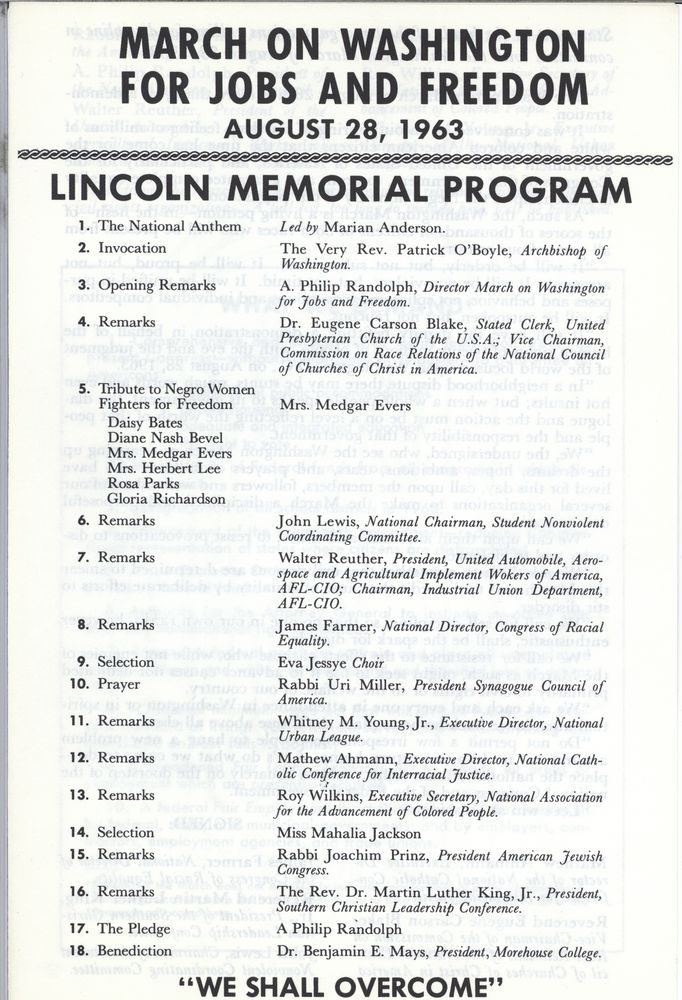
Black women leaders like Anna Arnold Hedgeman (National Council of Churches) and Dorothy Height (National Council of Negro Women) were part of the core organizing team, too, and they fought to include women in the speaking lineup. The group ultimately approved one woman – Myrlie Evers – to give a tribute to Black women during the official program; when Evers couldn’t make it to the March, Daisy Bates stepped in to speak instead. But before the official proceedings started, another Black woman addressed the crowd: entertainer and activist Josephine Baker, who’d traveled from her home in France to be there. Baker wrote to President John F. Kennedy after the March, calling it “indeed the greatest moment of my life.”
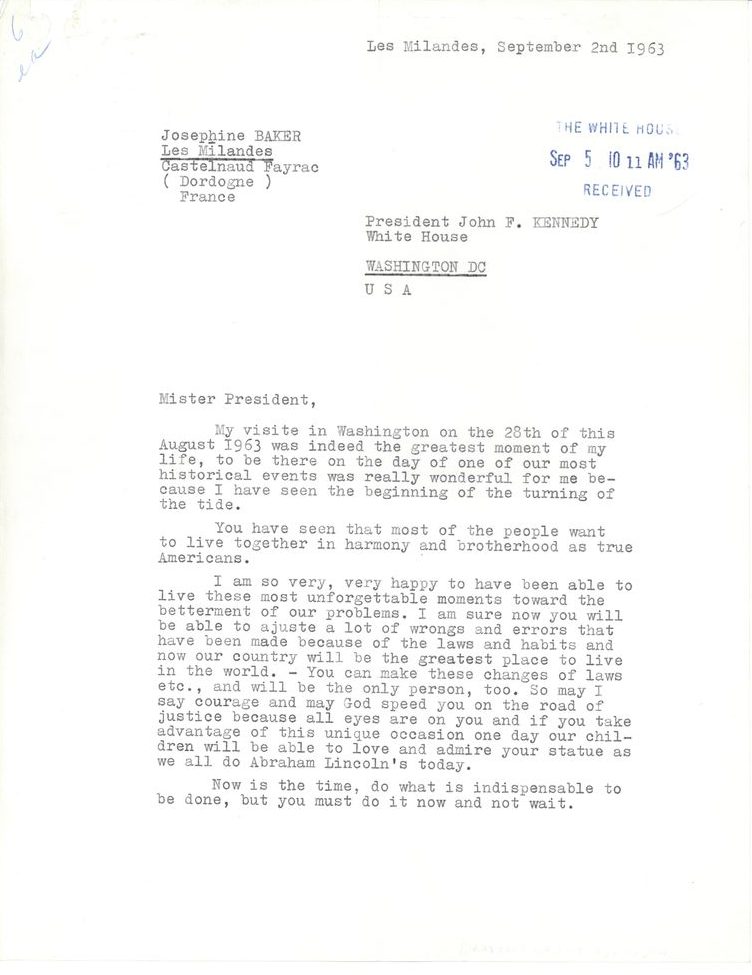
In his first and second oral history interviews for the JFK Library, James Farmer remembered other conflicts between March organizers, explaining that he’d originally imagined a March where “we would have raised some nonviolent hell. We would have had some sit-ins on Capitol Hill.” But some organizers thought these tactics would alienate members of Congress as they worked on Kennedy’s civil rights bill, and Farmer found that they “were not going to accept this kind of action.”
In the end, the group decided on what Farmer called a “controlled mass meeting” and signed on to a statement asking protestors to “place the Cause above all else.” They combined their organizations’ top priorities into a ten-point list of civil rights demands for lawmakers, including new policies on education, voting rights, housing, and labor.
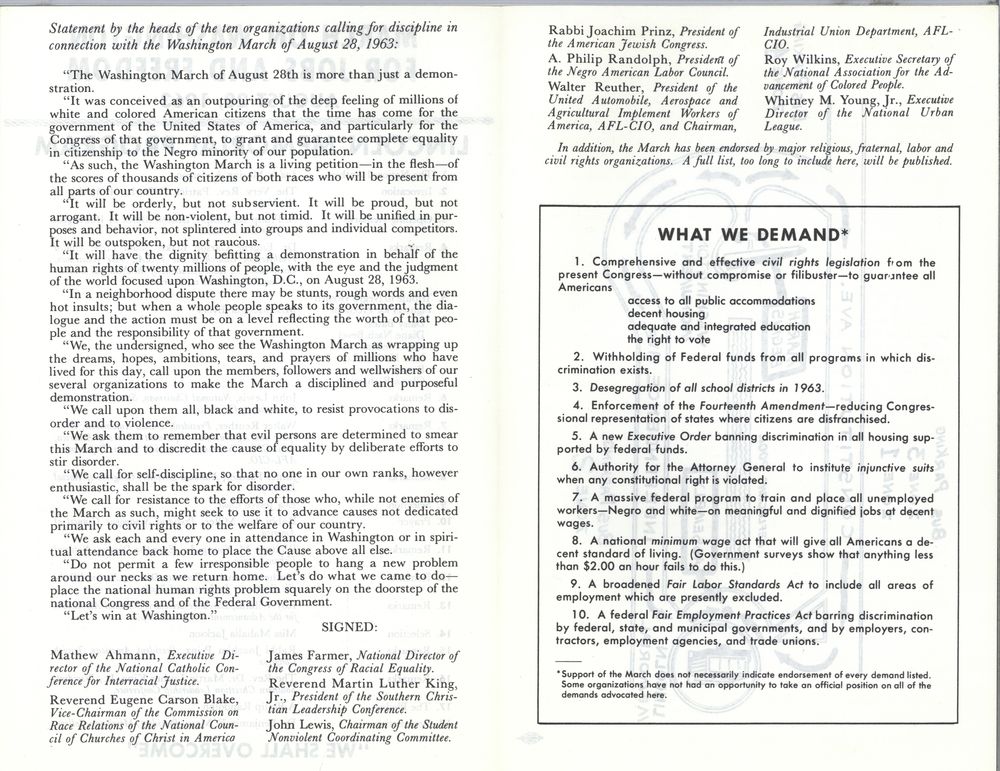
A few hours after the March, an interviewer asked Whitney Young about the reported disagreements between the organizers. He answered:
Any time you get five or six organizations with such magnificent and sparkling leadership as you have in this kind of a group, you are bound to, at moments, have minor disagreements… But I think today we made it abundantly clear that while we may sometimes differ on methods, that we are united as never before in the common goal of achieving total equality now for our Negro citizens.
Whitney Young interview, 28 August 1963. White House Central Subject Files.
THE LOGISTICS
During planning, another urgent question (shared by March leaders and the federal government) came up: how could 100,000 protestors – a huge underestimation, as it turned out – move safely through a route that covered just one mile between the Washington Monument and the Lincoln Memorial?
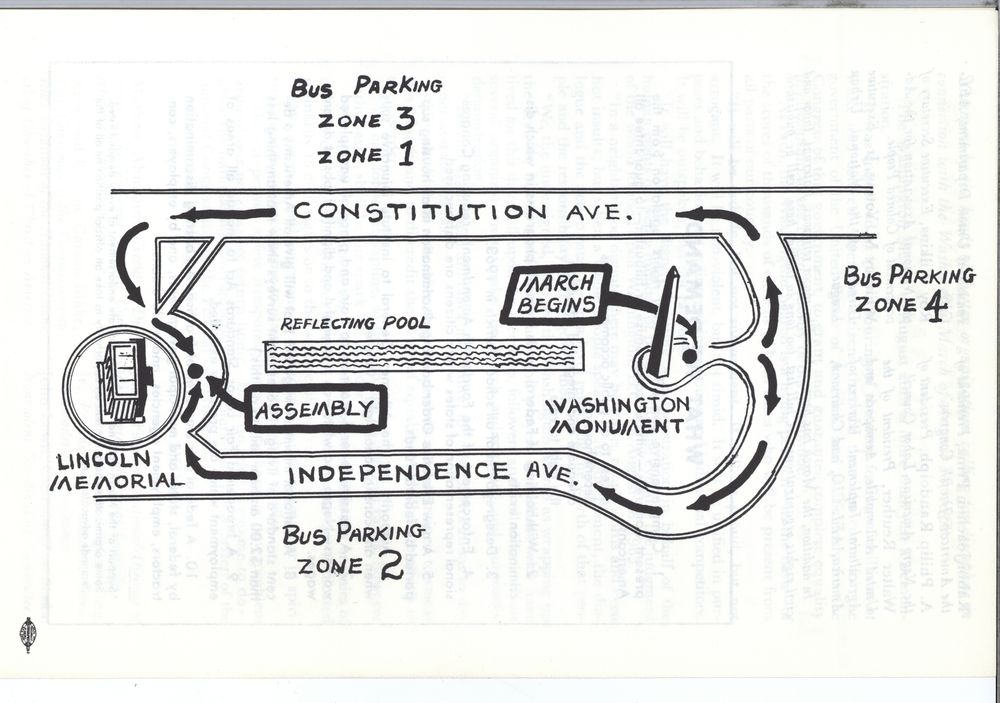
The answer came largely from another key figure whose name wasn’t on the official program: Bayard Rustin. Rustin’s work as the March’s Deputy Director – from preventing safety hazards to mapping out parking and restroom access – is well-documented, but in 1963, some of the other organizers wanted to keep him out of the spotlight. In his JFK Library oral history interview, John Lewis described their reasoning:
People…didn’t want him to be the head because he had been associated with the Young Communists Party. …He was gay, too. They thought…especially Southern senators would stand up on the floor and say they have this Black gay Communist leading the March.
John Lewis interview, 19 March 2004. John F. Kennedy Oral History Collection.
Rustin remained active behind the scenes, meeting with officials from the U.S. Justice Department, the National Park Police, and other agencies to advocate for marchers. Records of his meetings show Rustin at work as he asked officials to protect participants “from outside agitators or police brutality.”
THE GOVERNMENT
In oral history interviews, other March organizers described their own interactions with government officials at all levels – including the highest. John Lewis remembered telling President Kennedy about the March for the first time in a June 1963 meeting: “He didn’t necessarily like what he heard. And he said, ‘If you bring a lot of people to Washington, won’t there be a crisis, disorder, chaos? And we would never be able to get a civil rights bill through the Congress.’” James Farmer, who attended the same meeting, recalled that “the administration had made its position clear…that the March would be a mistake. Then their position seemed to change, and since the March was inevitable, they would seek to control it and be a part of it.”
At a press conference in July, a reporter asked Kennedy whether the March posed a problem for his administration. Kennedy noted: “We want citizens to come to Washington if they feel that they’re not having their rights expressed. But, of course, arrangements have been made to make this responsible and peaceful. This is not a march on the Capitol.”

A few weeks later, March Director A. Philip Randolph wrote to ask the President to meet with organizers on the morning of August 28, just hours before the official program would begin. In his oral history interview, Presidential speechwriter Ted Sorensen explained Kennedy’s decision to meet with the leaders after the March, instead: “He felt that if they should present him with a list of demands he could not meet, the march would then turn into an anti-Kennedy protest.”
In the hour-long meeting (which Kennedy secretly recorded), March leaders discussed their list of demands and their thoughts on civil rights legislation with the President and Vice President Lyndon B. Johnson.
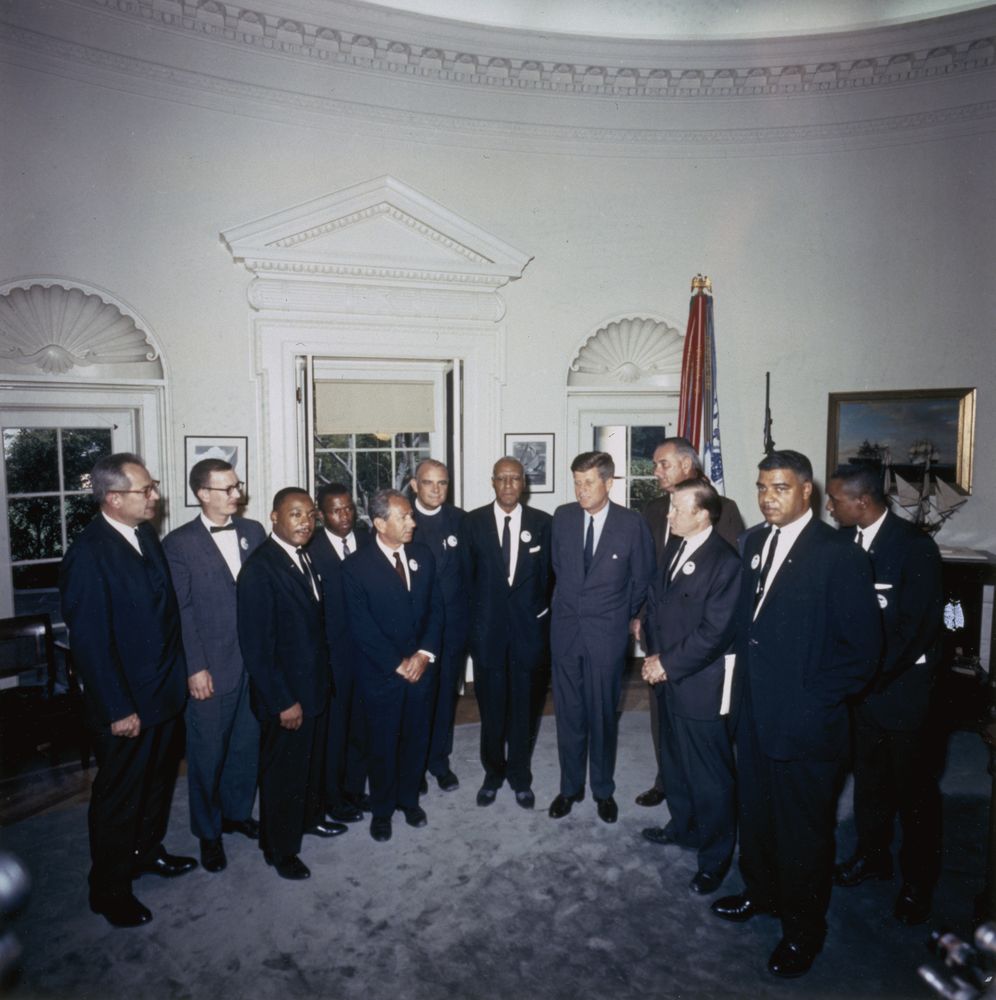
the PUBLIC
Throughout the planning process and up to the day of the March, organizers were aware of yet another complication: negative public opinion. A 1963 Gallup poll found that only 23% of Americans who’d heard of the March had a positive view of it, and 60% believed “mass demonstrations by Negroes” were likely to hurt the cause of racial equality. In the weeks before the event, the White House was flooded with letters from the public – now preserved in the Library’s archives – that reflected these views. Some expressed support for the March, while many others included racist language and predicted violence and riots.
John F. Kennedy Public Opinion Mail, Boxes 198-200.
In response to these letters, the Kennedy administration defended “the use of peaceful assemblies, large and small, to direct attention to grievances.” But, aligning with the President’s previous statements, staff members stopped short of explicitly endorsing the March and instead emphasized that the event would be peaceful.
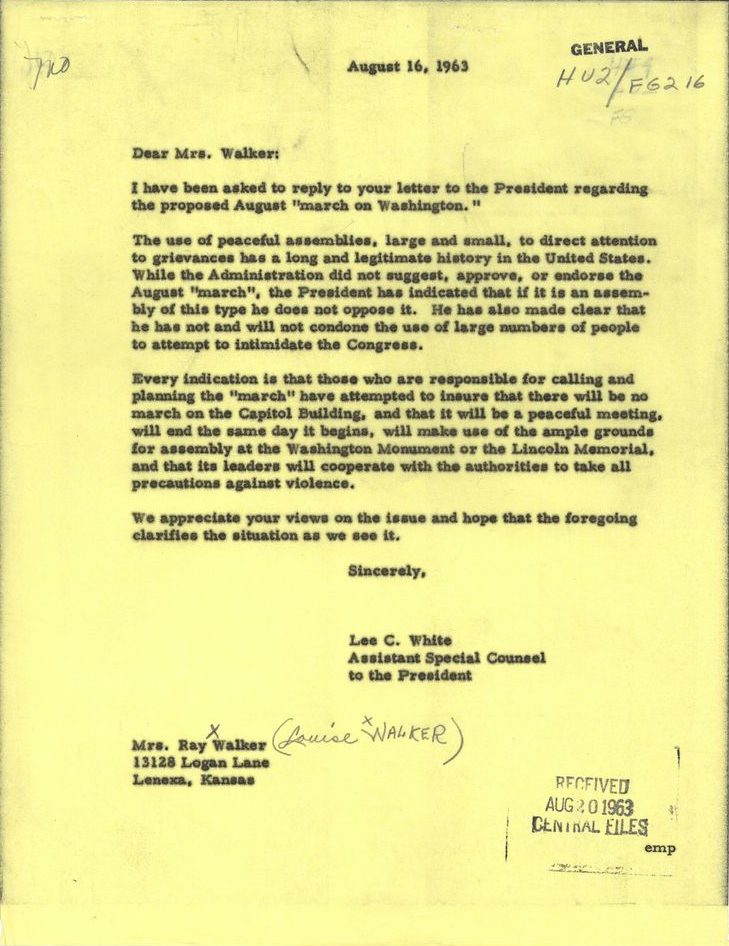
While March leaders included a statement in their official program asking participants to “be non-violent, but not timid,” Martin Luther King, Jr. addressed the ultimately unrealized fears of rioting in an interview after the March:
There are those individuals who constantly talk about violence or the possibility of a riot. …The constant prediction of violence is often an invitation to it. On the other hand, I think it is important to point out that when an individual stands up for his constitutional rights, even if in the quest for these rights violence is precipitated, the individual who stands up must not be blamed. Society must always protect the individual who stands up for his constitutional rights.
Martin Luther King, Jr. interview, 28 August 1963, White House Central Subject Files.
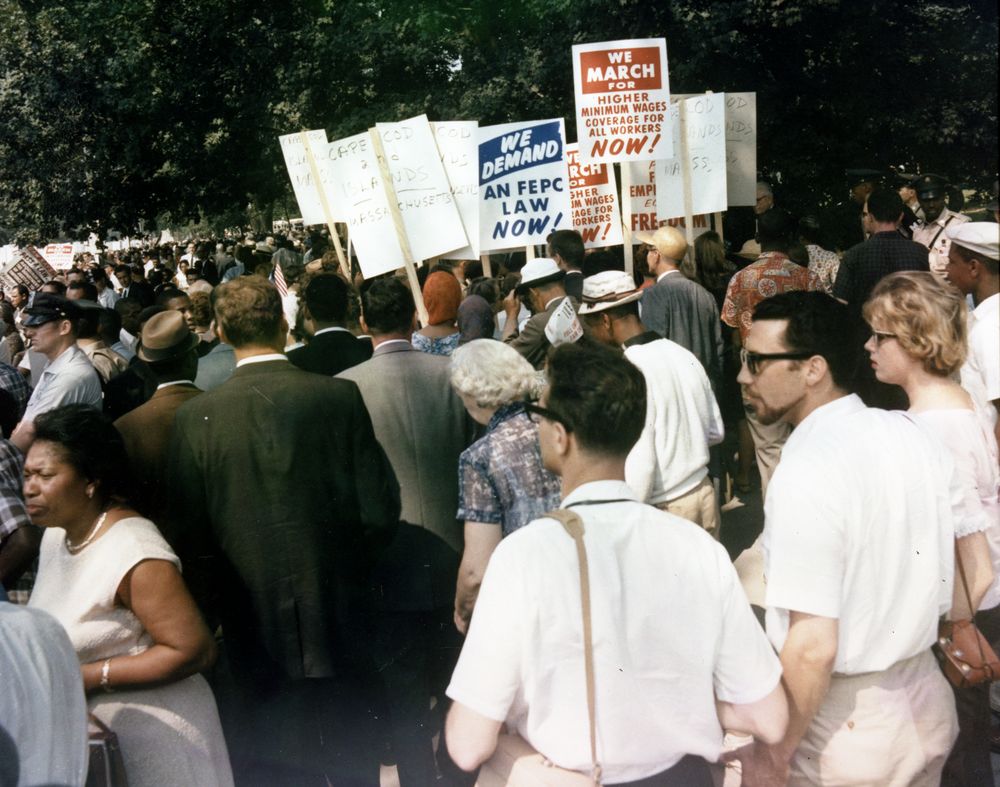
After the March, A. Philip Randolph explained the ultimate goal behind the months of effort: “If we were able to mobilize the total resources of various communities…we would make some progress in developing a national consensus in the interest of civil rights legislation.” Less than a year later, Randolph and other March leaders would stand in the East Wing of the White House to watch President Lyndon B. Johnson sign the 1964 Civil Rights Act.
At the JFK Library, we’re committed to preserving and providing access to records that document not only the March itself, but the complex work of Black leaders – both famous and lesser-known – in their fight for civil rights during John F. Kennedy’s Presidency. You can learn more about the Library’s civil rights collections here, and find more archival materials documenting the March through the National Archives Rediscovering Black History blog.
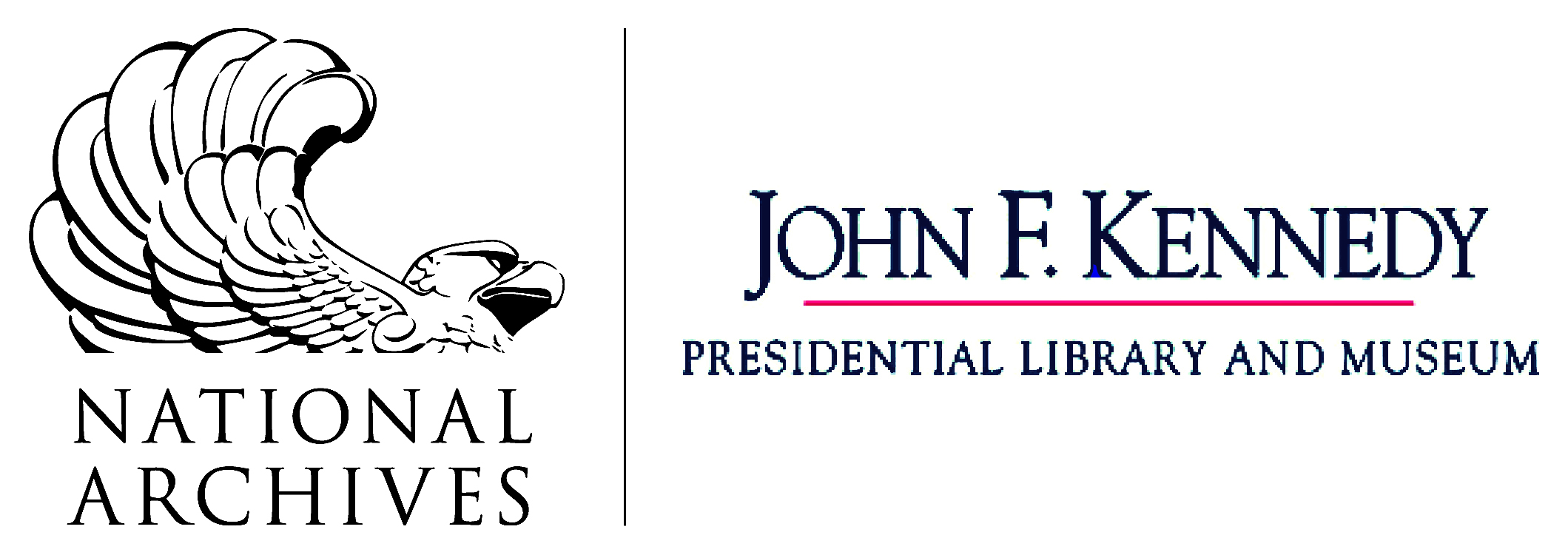
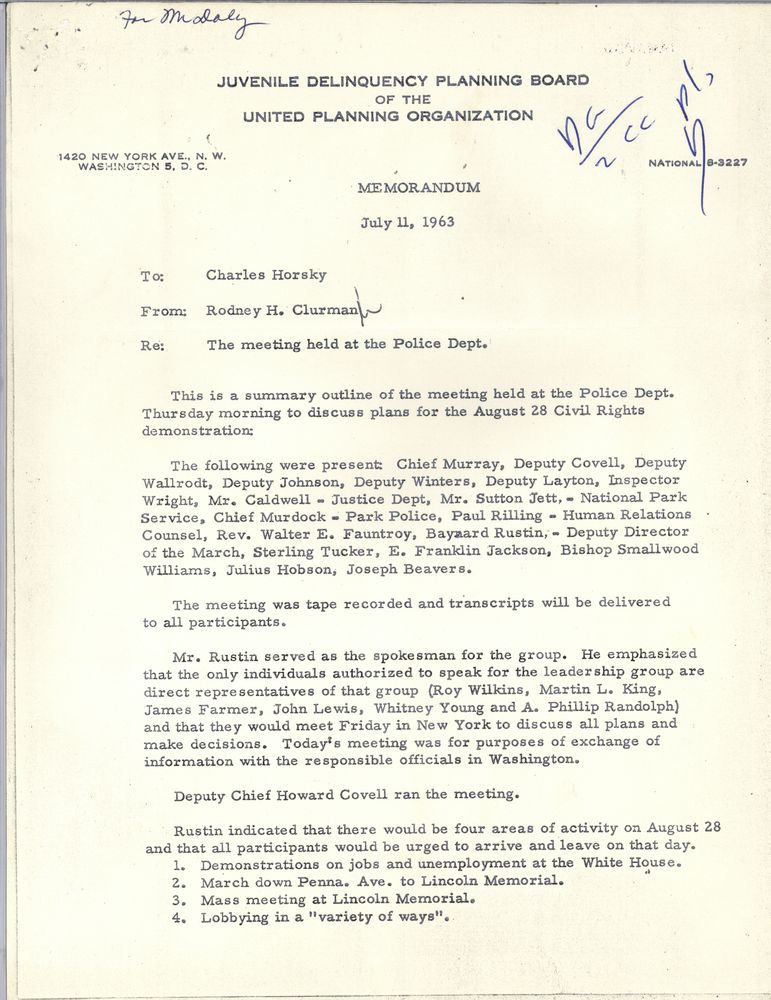

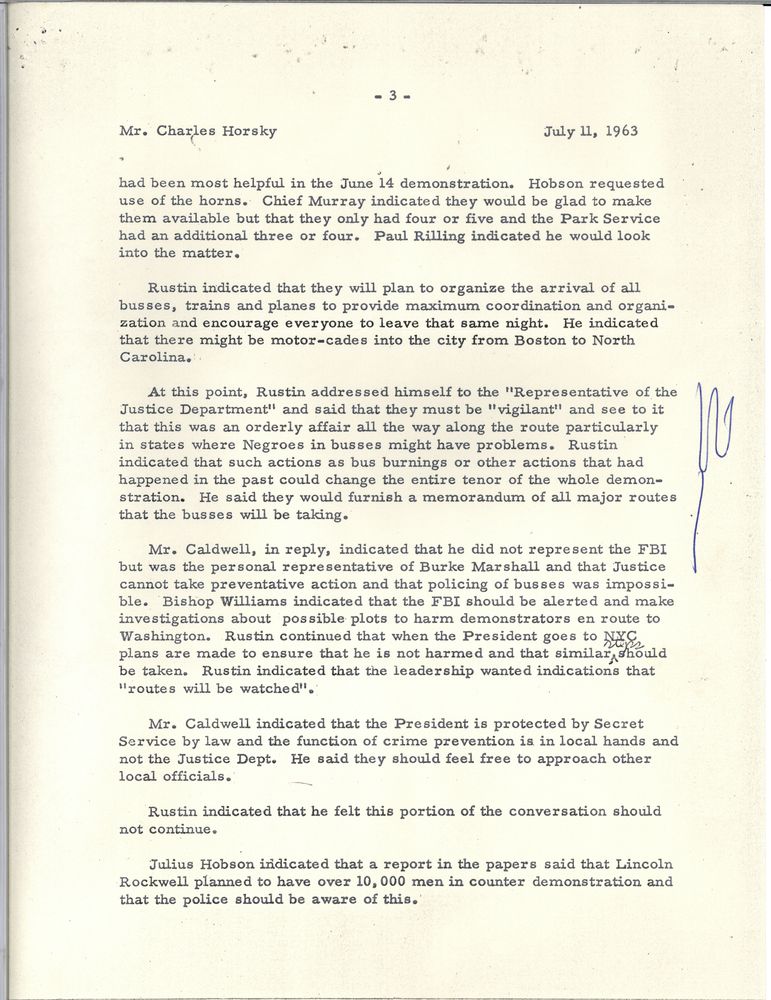






Archivist,
Thank you for posting this. Documents like this show that those “historians” who excoriate Jack as “going slow on civil rights” have not examined the week by week, day by day documentation. Neither do they give enough weight to the civics of the matter: if the Congress does not pass the bill, the President cannot sign it. I particularly enjoy the mad letter from the lady who says everyone knows that the “Negroes” elected him. Like that was a bad thing. The state of our nation today shows many still stand with that lady. In ‘63 they could not stop the march. Today, no one can stop the future with its arc of justice from marching to meet us.
Thank you.
Dr. K. Krefft
Thank you for an additional good write-up. Where else could anybody get that kind of information and facts in these a ideal way of writing? I have a presentation subsequent week, and I am to the appear for this kind of facts.
[…] Stacy. “Making the March on Washington, August 28, 1963.” JFK Library Blog. August 27, […]
[…] […]
[…] At the end of the day, the leaders of the march met with US President John F. Kennedy at the White H… […]
Our country experienced a huge loss when President Kennedy got assassinated…. We can only “guess” what could have happened and all the progress we could have experienced if he finished his term and got reelected…. Sad!
[…] der damals 23-jährige John Lewis von der Studentenorganisation SNCC, der jüngste Redner beim „Marsch auf Washington“. Bei einem Treffen mit Bürgerrechtlern habe der Präsident vor „Unruhen und Chaos“ gewarnt. […]
[…] to PresidentsHoover Heads: Desegregating the Commerce DepartmentJFK Library Archives: Making the March on Washington, August 28, 1963JFK Library Archives: “Understand Our Urgency:” Oral Histories by Black AmericansNational […]